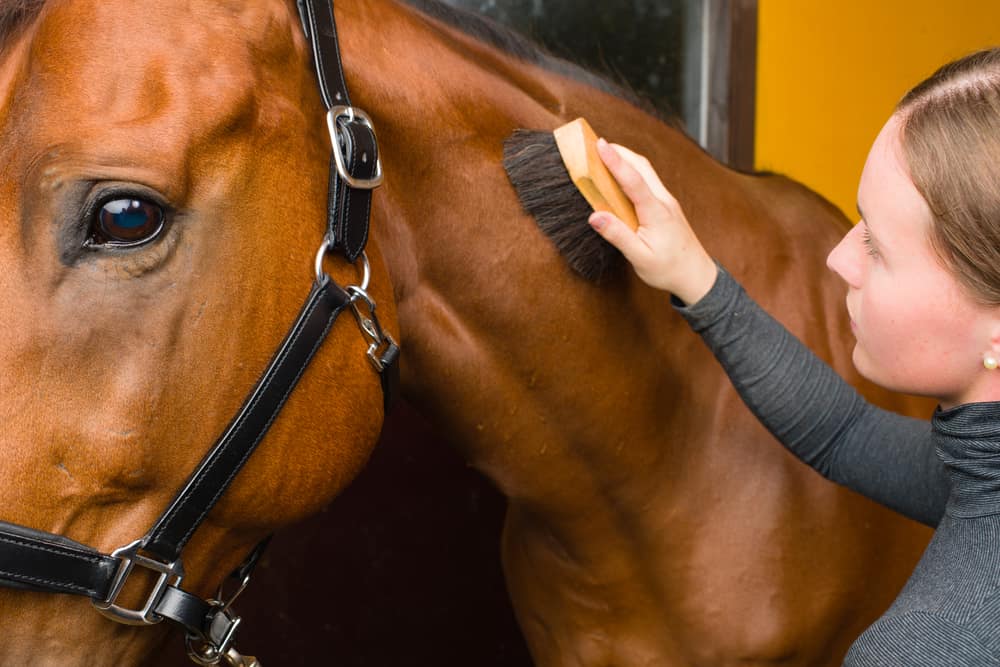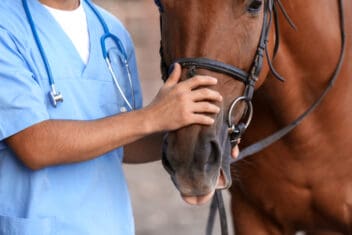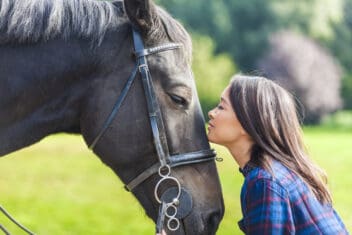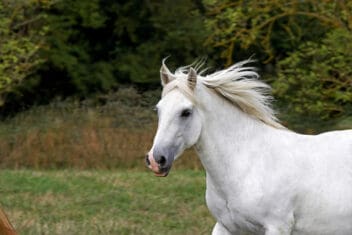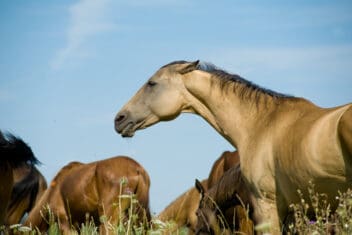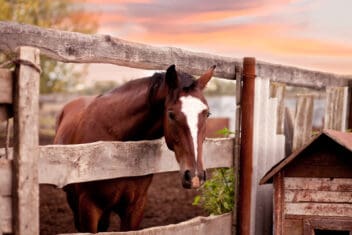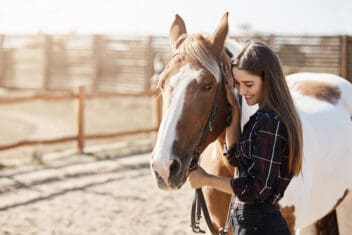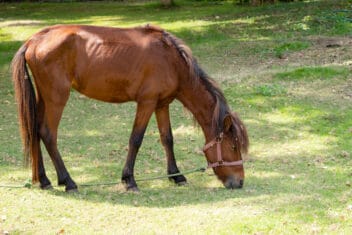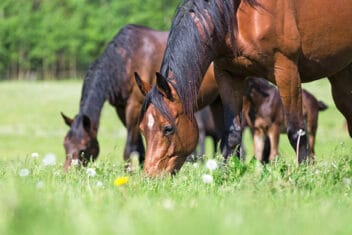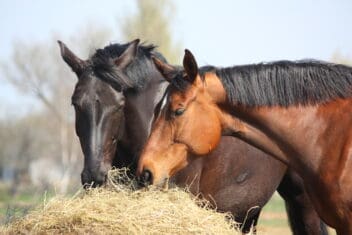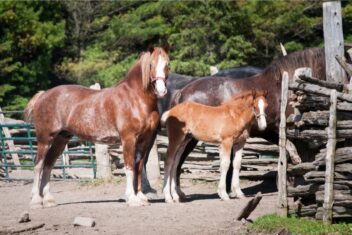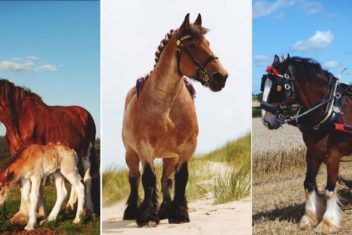Horse ownership is exciting, but bringing your first horse home can also be overwhelming. Providing day-to-day care at first is often full of questions. Am I doing this right? Am I doing enough? What sort of daily grooming routine should I have with my horse?
For horses, one of the most important aspects of daily care is grooming. Well-groomed horses not only look better, but they’re also healthier than their undergroomed counterparts.
But what constitutes “well-groomed” can vary a lot depending on the lifestyle of your horse. Let’s explore the specifics.
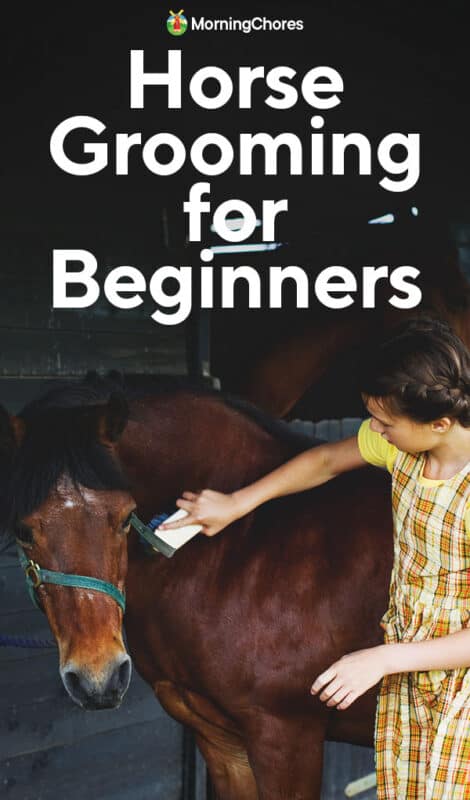
Determine Grooming Needs
Horse owners, like so many animal lovers, are often overburdened by the expectations of a “pet parent” culture. New horse owners are especially vulnerable to advertising designed to sell them all the latest gadgets.
Despite what the ads say, horses don’t need rooms full of expensive hoof treatments, buckets of brushes, and specialty blankets. Like all animals, they simply need consistent, knowledgeable care, quality food, and a few species-specific tools to keep them healthy.
These days, most horses spend their days in stalls with short periods of time grazing in pastures. Boarded horses and those kept on small acreage don’t always have hours to spend in the pasture.
If your horse is stabled for most of the day, he’ll need a more intensive daily grooming routine.
This may seem counter-intuitive. Pastures are full of dirt, grass, and mud! But in the field, your horse can do a lot to maintain his own coat and skin.
Rolling in the dirt and grazing under the sun does a lot to keep down pests and skin issues. Consistent movement as he grazes and plays with other horses will help him wear down his hooves naturally.
In the stable, your horse doesn’t have access to any of his natural means of grooming. He relies on you to do it all. If your horse spends most or all of his free time out in the pasture, he doesn’t need to be fully groomed daily.
In fact, he’s happier with full grooming once or twice a week or before and after heavy work. The rest of the time, you can brush him well with a dandy brush and clean his hooves before and after working with him. This is doubly true if your horse is blanketed during rainy or snowy weather.
Of course, any horse with caked-on mud in the area where the saddle and bridle go needs to be groomed to remove the mud, which can irritate their skin. Hooves should be picked before and after every ride.
Prepare Yourself and Your Horse
Full grooming is a workout. Your horse is a big animal – there’s a lot of him to keep clean. For a head to tail grooming, you’ll need a rubber curry comb, a dandy or tampico brush with stiff bristles, a soft-bristle body brush, a mane comb, a hoof pick, rubbing cloths, and hoof oil or conditioner.
That may seem like a lot, but remember that your horse has three very different areas of his body to groom. He has the long hair of his mane and tail. Then he has the short hair and skin on his body.
Finally, he has hard hooves – the health of which are absolutely essential to his ability to stay healthy and active. Each of these areas needs unique attention.
Always tie your horse to a secure post or beam before grooming. If possible, use an easy-to-manage clip or quick-release knot, just in case you need to release your horse quickly.
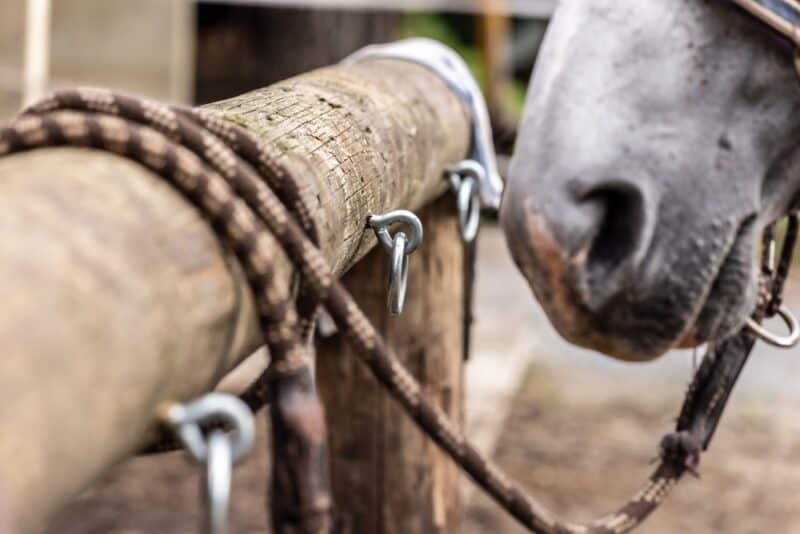
Grooming the Body
Some people start at the feet and then move onto the horses body, but I’ve always preferred to work my way down. If you’re grooming a nervous or restless horse, sometimes it helps to start with relaxing brushing before handling their feet.
Rubber Curry Comb
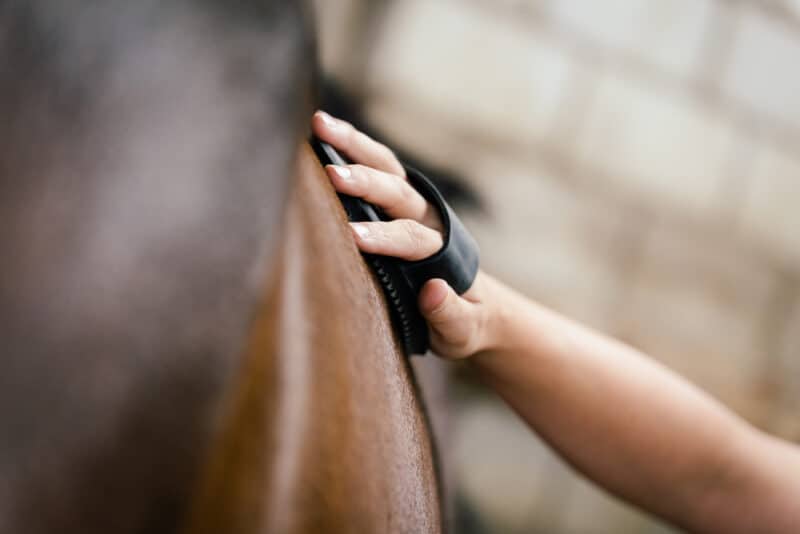
Start with the rubber curry comb. Don’t use steel ones, those are too rough.
If your horse isn’t shedding his winter coat, or is sweaty or itchy, you can sometimes skip this step. Use your rubber curry in circular motions – making big and small circles down your horse’s neck, across his shoulders, and over his body.
If you brush from neck to tail, the dust and debris will move away from his eyes and behind him. As you brush, the curry comb loosens shedding hair, increases circulation, and feels amazing to your horse.
Most horses will lean into the curry comb as you work it steadily over their body. Avoid using the curry comb on your horse’s legs, face, and sensitive areas. Use firm pressure and revisit the same areas a few times to ensure you’ve done it thoroughly.
Also, keep in mind that some horses are extremely sensitive and thin-skinned. Thoroughbreds often have a reputation for being sensitive-skinned. In that case, use something gentler, like the Epona Tiger Tongue.
The Dandy Brush
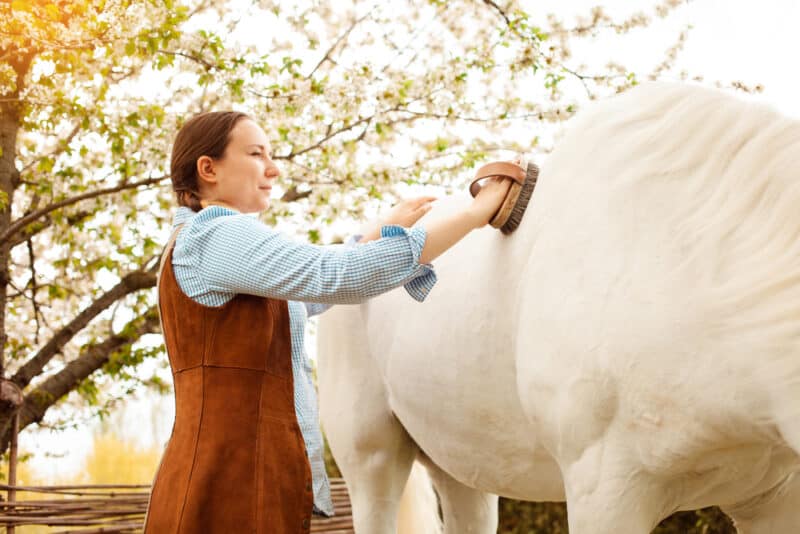
The dandy brush is built to brush off the dust, sweat, and loose hairs that lie on the surface of your horse’s coat. It’s a stiff bristled brush – perfect for brushing away all the loose hairs and debris the rubber curry comb left behind.
The dandy brush is also a great brush to use right before tacking up a horse that’s been out in the pasture because it removes anything that might get caught under the saddle and chafe.
Use the dandy brush to brush in smooth, short strokes along your horse’s back, neck, shoulders, and flanks. Don’t use this brush on your horse’s legs, underbelly, or face. It’s too firm to be comfortable on the more sensitive skin in those areas.
Use firm pressure. As you brush with the curry comb and the dandy brush, watch your horse for reactions that indicate sore spots, aches, or any other signs of illness and injury.
Finishing Up with the Body Brush
The body brush is the softest of the brushes you’ll use on your horse. It’s great for brushing your horse’s sensitive areas and adding shine to his coat. Some people use a smaller body brush on the horse’s face because the full-sized body brush can be cumbersome there.
Continue to brush from head to tail, moving in the direction of the hair. As your brush your horse’s legs with the body brush, look for any signs of injury. Swelling, tenderness, nicks, and cuts are all common issues to look for.
Hoof Care
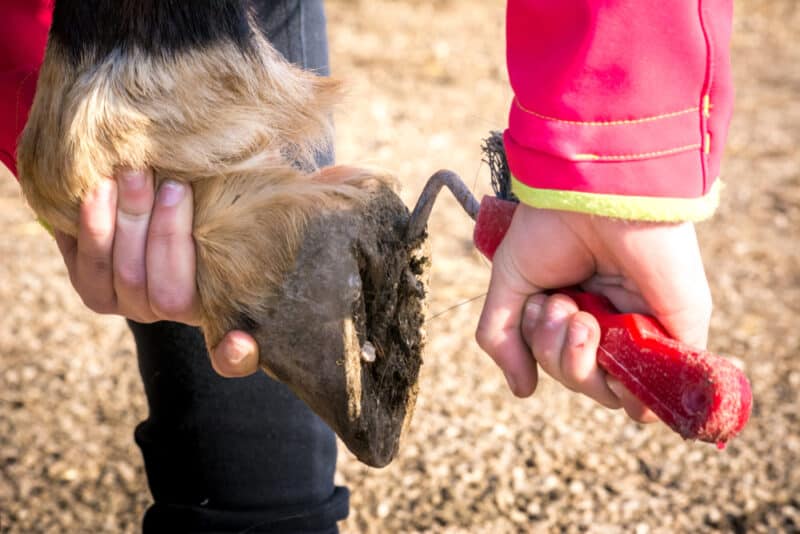
Now that you’ve brushed your way down to your horse’s hooves, it’s time to take a look at them. Grab your hoof pick and lift up each hoof individually.
To lift a horse’s hoof, stand parallel to your horse, facing his tail. Lean gently into him as you run your hand down his leg. He should lift his hoof for you, though some horses need a few lessons in grooming etiquette first.
When you have his hoof in hand, take a look at it. Use the pick to gently clear out any debris. Working from back to front, pay special attention to the frog (the softer, V-shaped area of the hoof) and under or around the shoe (if your horse is shod).
Your goal is to keep anything from getting lodged in the hoof. Rocks and such can cause your horse a great deal of pain.
While you’re cleaning, look for cracks, swellings, or overgrowth. On average, horses must have their feet trimmed every 5-8 weeks. Thrush, a common ailment – especially for stabled horses – is also easy to spot. Look for a dark discharge in and around the frog.
If you notice any serious issues like thrush or cracks in the hoof, it’s time to call in the farrier.
In the summer, or if your horse’s hooves are prone to cracking, use hoof oil daily to condition them. Hoof oil is one of those grooming items that isn’t always necessary, but it can be a great addition to your grooming kit.
Final Touches
Alright, you’re almost done! Once you’ve finished his hooves, your horse needs his face and dock (under the tail) wiped down with a soft cloth. Then, comb out his mane and tail, and he’s all set.
Tending the Sensitive Areas
Use one soft cloth to wipe your horse’s eyes, ears, and face. Take a look at his eyes as you do to see if they’re runny, red, or irritated. Peek at your horse’s ears to check for mites or ticks.
After wiping off your horse’s face, open his mouth and look at his teeth. You can tell a lot about a horse’s health by looking at his teeth. Any signs of inflammation, sores, or loose teeth are problematic.
If you notice serious or persistent dental issues, call your vet and set up a check-up. A healthy horse’s mouth has strong teeth and firm, salmon-colored gums. If your horse’s gums are too pale or too bright, there is an issue that needs to be corrected.
Mane and Tail
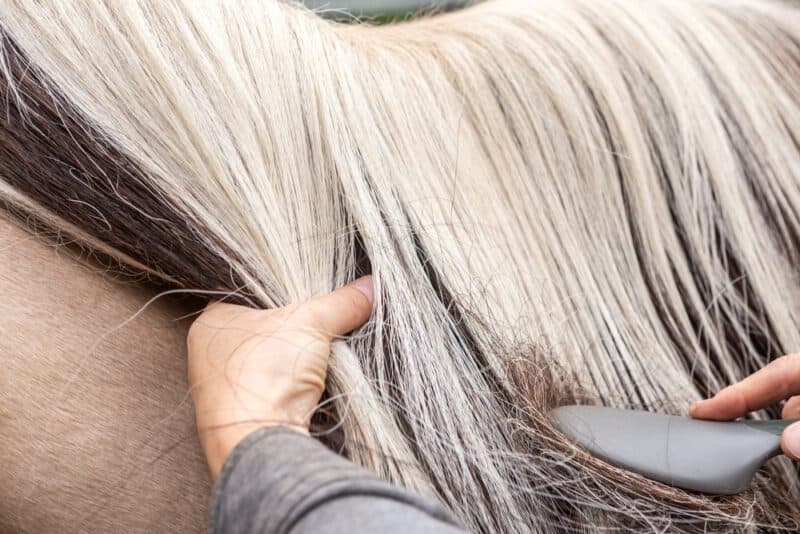
Last of all, use your mane comb to gently comb out the tangles in your horse’s mane and tail. Work slowly, taking small sections at a time. It’s ok to use detangler (human or horse specific). Don’t drag down on your horse while combing; instead, pick carefully through the tangles.
When combing the tail, stand off to the side, so you don’t accidentally get kicked if your horse spooks at something. If the mane and tail are especially tangled, start out by using the dandy brush to loosen some of the easier tangles before moving on the comb.
